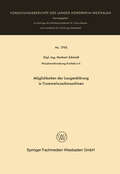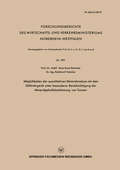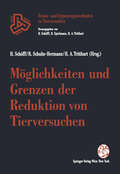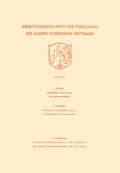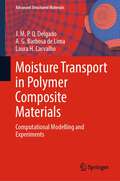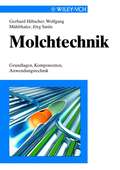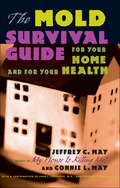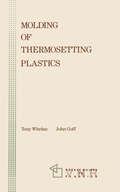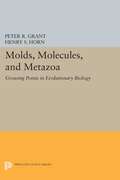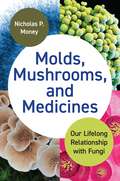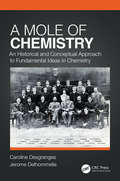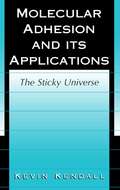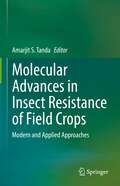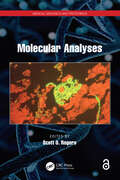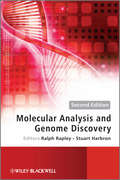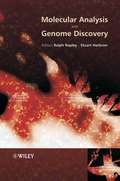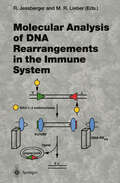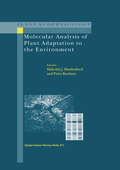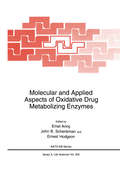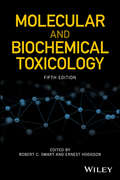- Table View
- List View
Möglichkeiten der Laugenklärung in Trommelwaschmaschinen (Forschungsberichte des Landes Nordrhein-Westfalen #1795)
by Herbert SchmidtZusammenfassend kann gesagt werden, daß es grundsätzlich möglich ist, Schmutz partikel, deren Wichte sich von der Flüssigkeit der Waschlauge unterscheidet, von dieser bis zu einem gewissen Grade zu trennen. In einem Versuchsmodell konnte unter optimalen Bedingungen bei stark ver schmutzter Wäsche bis zu 25% des aus der Lauge ausschleuderbaren Schmutzes in einem Laugenbehälter zurückbehalten werden. Trotzdem muß der Nutzeffekt als verhältnismäßig gering angesehen werden, da es sich um grobe Verunreini gungen handelt, die nur bei ganz stark verschmutzter Wäsche vorhanden sind. In den meisten Fällen wird der Schmutz in so feiner Verteilung vorliegen, daß eine Klärung der Lauge auf der untersuchten Basis nicht mehr möglich ist. Außerdem liegt der Sinn eines guten Waschmittels u. a. auch darin, Schmutzteilchen in der Waschlauge in der Schwebe zu halten, d. h. also ein Aufziehen zu verhindern und so einem Vergrauen der Wäsche entgegenzuwirken. Natürlich muß eine der Schmutzmenge entsprechende Waschmittelmenge ein gesetzt werden, da Unterkonzentrationen in extremen Fällen zu Schmutz zusammenballungen (Fettläuse) führen kann. Werden solche »gebrochenen« Laugen durch einen Absetzbehälter geführt, so werden hier natürlich in verstärktem Maße Abscheidungen festgehalten. Sicher wird dieser Fall in der Praxis, besonders bei der Vorwäsche stark verschmutzter Wäsche, schon einmal vorkommen, so daß eine solche Vorrichtung hier auch gewisse praktische Bedeutung und eine Art Sicherheitsfaktor darstellen könnte. Ob auf diese Weise die Gefahr einer Wäschevergrauung merklich geringer ist, wurde bisher noch nicht untersucht. Es muß jedoch bezweifelt werden. Bei einem richtig geführten Waschprozeß darf ein Waschen in gebrochener Lauge nicht vorkommen.
Möglichkeiten der quantitativen Mineralanalyse mit dem Zählrohrgerät unter besonderer Berücksichtigung der Mineralgehaltsbestimmung von Tonnen (Forschungsberichte des Wirtschafts- und Verkehrsministeriums Nordrhein-Westfalen #399)
by Hans-Ernst SchwieteMöglichkeiten und Grenzen der Reduktion von Tierversuchen (Ersatz- und Ergänzungsmethoden zu Tierversuchen)
by Harald Schöffl Rolf Schulte-Hermann Helmut A. TritthartDer erste Band der neuen Reihe gibt einen weitgefächerten Überblick über die Probleme, Grenzen und Möglichkeiten, Tierversuche in der biomedizinischen Forschung zu reduzieren. Behandelt werden die gesetzlichen Grundlagen in den deutschsprachigen Ländern, Toxikologie und In-Vitro-Toxikologie, In-Vitro-Systeme in Pharmakologie und Physiologie, Immunologie, Molecular Modelling, Videomikroskopie, In-Vitro-Systeme in der Krebsforschung und in der Ökotoxikologie. Experten aus Industrie, Universität und Behörden versuchen, bisher Geleistetes darzustellen, Schwachstellen aufzuzeigen und zukunftsträchtige Problemlösungsmodelle vorzustellen.
Möglichkeiten und Grenzen der Resistenzzüchtung / Der Weg der Landwirtschaft von der Energieautarkie zur Fremdenergie (Arbeitsgemeinschaft für Forschung des Landes Nordrhein-Westfalen #10)
by Hans BraunMoisture Transport in Polymer Composite Materials: Computational Modelling and Experiments (Advanced Structured Materials #160)
by J.M.P.Q. Delgado A. G. Barbosa de Lima Laura H. CarvalhoThis book provides valuable information about fiber-reinforced polymer composites, with emphasis in the process of water absorption by experiments and simulation. In this monograph, we present and discuss emerging topics related to fundamentals, engineering applications, advanced mathematical modeling applied to Fickian and non-Fickian diffusion processes, analytical and computational procedures and experiments on water absorption of polymer composites reinforced by vegetable fibers. The book serves as a comprehensive learning tool for engineers, professionals, and researchers involved in this advanced interdisciplinary field, and as a reference work for both undergraduate and graduate courses.
Molchtechnik: Grundlagen, Komponenten, Anwendungstechnik
by Gerhard Hiltscher Wolfgang Mühlthaler Jörg SmitsMolche sind Paßkörper, die einen Rohrinhalt mit Hilfe eines Gases oder einer Flüssigkeit durch eine Rohrleitung schieben. Sollen verschiedene Produkte voneinander getrennt gefördert werden, kein Verlust von wertvollen Rohstoffen und Fertigprodukten auftreten, die Umweltbelastung reduziert werden, kurzum mit geringen Investitionskosten eine hohe Effizienz der Anlage erzielt werden, kommt die Molchtechnik zum Einsatz. Das Buch beschreibt methodisch und übersichtlich die apparativen und anwendungstechnischen Grundlagen der Molchtechnik, die für die Planung und Auslegung der Anlagen wichtig sind. Die langjährige Industrieerfahrung der Autoren kommt den verschiedenen Beispielen aus der Praxis zugute. Es ist eine in dieser Form und in diesem Umfang konkurrenzlose Gesamtdarstellung dieser Technik. Ingenieure und Verfahrenstechniker, die Produktionsanlagen in der Chemischen Industrie, Lebensmittel-, Kosmetischen- und Pharmazeutischen Industrie sowie im Raffineriebereich planen, bauen und betreiben, finden in diesem Handbuch Anleitung und Unterstützung bei der Gestaltung ihrer Anlage.
The Mold Survival Guide: For Your Home and for Your Health
by Jeffrey C. May Connie L. MayThe image was shocking: a couple wearing protective suits and masks in their own home! The accompanying USA Weekend story documented the mold-related headaches, fatigue, and respiratory problems that forced Melinda Ballard and Ron Allison to abandon their dream house, leaving all their possessions behind. Another family was so terrified that they had their mold-filled house torn down.Mold growth threatens property managers and builders, as well as home owners and renters. Legal settlements in some mold cases have reached the millions, and home insurance rates are skyrocketing. Some people argue that mold concerns are exaggerated; others are convinced that mold growth is destroying their health.In The Mold Survival Guide, a prominent indoor air quality professional teams up with a writing specialist to describe mold, to explain where and why it flourishes in homes, and to offer advice on how to eradicate mold while minimizing health risks. The book includes a chapter by two physicians who explain how exposure to mold can affect health.With clear scientific explanations and expert advice, The Mold Survival Guide is a valuable resource for anyone worried about a common household problem that can have serious consequences.
Molding of Thermosetting Plastics
by Tony Whelan John GoffDuring the years 1987 and 1988 we published a series of articles on the molding of thermoplastics materials in the magazine British Plastics and Rubber (B P & R). These articles were very well received and we also received a large number of requests for reprints. In order to cater for what is obviously a need in the thermoplas tics molding industry, we therefore brought the information together and produced it in the form of a book. We can only hope that it serves you well and that you find the information useful. We in turn would like to thank the editor of the magazine B P & R for helping us in this matter. Thanks are also due to our many friends and colleagues throughout the molding industry for their useful help and advice, in particular the company Moldflow (Europe) limited deserve a special mention as they allowed us to extract information from their extensive data base.
Molds, Molecules, and Metazoa: Growing Points in Evolutionary Biology
by Peter R. Grant Henry S. HornThrough an integration of systematics, genetics, and related disciplines, the Modern Synthesis of Evolutionary Biology came into being over fifty years ago. Knowledge of evolution has since been transformed by several revolutions: the way we interpret the fossil record has been radically affected by theories of continental drift and asteroid impacts; the way we classify organisms has been influenced by the development of cladistics. Perhaps the most dramatic revolution has been the explosion in molecular biology of information about the genome. Aiming to capture the excitement of modern evolutionary biology, six prominent scientists here explore important issues and problems in their areas of specialization and identify the most promising directions of future research.The scope of this volume ranges from macroevolutionary patterns in the Precambrian to molecular evolution of the genome. Major themes include the origin and maintenance of variation and the causes of evolutionary change. Chapters on paleontology, ecology, behavior, development, and cell and molecular biology are contributed by Jim Valentine, Graham Bell, Mary Jane West Eberhard, Leo Buss, Marc Kirschner, and Marty Kreitman. The book contains an introductory chapter by John Bonner, whose seminal work is honored here.Originally published in 1992.The Princeton Legacy Library uses the latest print-on-demand technology to again make available previously out-of-print books from the distinguished backlist of Princeton University Press. These editions preserve the original texts of these important books while presenting them in durable paperback and hardcover editions. The goal of the Princeton Legacy Library is to vastly increase access to the rich scholarly heritage found in the thousands of books published by Princeton University Press since its founding in 1905.
Molds, Mushrooms, and Medicines: Our Lifelong Relationship with Fungi
by Nicholas P. MoneyThe hidden role of fungi inside and all around usFrom beneficial yeasts that aid digestion to toxic molds that cause disease, we are constantly navigating a world filled with fungi. Molds, Mushrooms, and Medicines explores the amazing ways fungi interact with our bodies, showing how our health and well-being depend on an immense ecosystem of yeasts and molds inside and all around us.Nicholas Money takes readers on a guided tour of a marvelous unseen realm, describing how our immune systems are engaged in continuous conversation with the teeming mycobiome inside the body, and how we can fall prey to serious and even life-threatening infections when this peaceful coexistence is disturbed. He also sheds light on our complicated relationship with fungi outside the body, from wild mushrooms and cultivated molds that have been staples of the human diet for millennia to the controversial experimentation with magic mushrooms in the treatment of depression.Drawing on the latest advances in mycology, Molds, Mushrooms, and Medicines reveals what scientists are learning about the importance of fungi to our lives, from their vital role in supporting the ecosystems on which we depend to their emerging uses in lifesaving medicine.
Molds, Mushrooms, and Medicines: Our Lifelong Relationship with Fungi
by Nicholas P. MoneyThe hidden role of fungi inside and all around usFrom beneficial yeasts that aid digestion to toxic molds that cause disease, we are constantly navigating a world filled with fungi. Molds, Mushrooms, and Medicines explores the amazing ways fungi interact with our bodies, showing how our health and well-being depend on an immense ecosystem of yeasts and molds inside and all around us.Nicholas Money takes readers on a guided tour of a marvelous unseen realm, describing how our immune systems are engaged in continuous conversation with the teeming mycobiome inside the body, and how we can fall prey to serious and even life-threatening infections when this peaceful coexistence is disturbed. He also sheds light on our complicated relationship with fungi outside the body, from wild mushrooms and cultivated molds that have been staples of the human diet for millennia to the controversial experimentation with magic mushrooms in the treatment of depression.Drawing on the latest advances in mycology, Molds, Mushrooms, and Medicines reveals what scientists are learning about the importance of fungi to our lives, from their vital role in supporting the ecosystems on which we depend to their emerging uses in lifesaving medicine.
A Mole of Chemistry: An Historical and Conceptual Approach to Fundamental Ideas in Chemistry
by Caroline Desgranges Jerome DelhommelleA Mole of Chemistry: An Historical and Conceptual Approach to Fundamental Ideas in Chemistry is intended for students in their undergraduate years who need to learn the basics of chemistry, including science and engineering as well as humanities. This is a companion textbook which provides a unique perspective on how the main scientific concepts describing nature were discovered and, eventually, how modern chemistry was born. The book makes use of context found in history, philosophy and the arts to better understand their developments, and with as few mathematical equations as possible. The focus is then set on scientific reasoning, making this book a great companion and addition to traditional chemistry textbooks. Features: A companion for a general chemistry textbook and provides an historical approach to fundamental chemistry Presents origins of fundamental ideas in chemical science and the focus is then set on scientific reasoning User friendly and with as few mathematical equations as possible About the Authors: Dr. Caroline Desgranges earned a DEA in Physics in 2005 at the University Paul Sabatier – Toulouse III (France) and a PhD in Chemical Engineering at the University of South Carolina (USA) in 2008. Dr. Jerome Delhommelle earned his PhD in Chemistry at the University of Paris XI-Orsay (France) in 2000. He is currently working as an Associate Professor in Chemistry at the University of North Dakota.
A Mole of Chemistry: An Historical and Conceptual Approach to Fundamental Ideas in Chemistry
by Caroline Desgranges Jerome DelhommelleA Mole of Chemistry: An Historical and Conceptual Approach to Fundamental Ideas in Chemistry is intended for students in their undergraduate years who need to learn the basics of chemistry, including science and engineering as well as humanities. This is a companion textbook which provides a unique perspective on how the main scientific concepts describing nature were discovered and, eventually, how modern chemistry was born. The book makes use of context found in history, philosophy and the arts to better understand their developments, and with as few mathematical equations as possible. The focus is then set on scientific reasoning, making this book a great companion and addition to traditional chemistry textbooks. Features: A companion for a general chemistry textbook and provides an historical approach to fundamental chemistry Presents origins of fundamental ideas in chemical science and the focus is then set on scientific reasoning User friendly and with as few mathematical equations as possible About the Authors: Dr. Caroline Desgranges earned a DEA in Physics in 2005 at the University Paul Sabatier – Toulouse III (France) and a PhD in Chemical Engineering at the University of South Carolina (USA) in 2008. Dr. Jerome Delhommelle earned his PhD in Chemistry at the University of Paris XI-Orsay (France) in 2000. He is currently working as an Associate Professor in Chemistry at the University of North Dakota.
Molecular Adhesion and Its Applications: The Sticky Universe
by Kevin KendallAt the beginning of the twentieth century, engineers and technologists would have recognized the importance of adhesion in two main aspects: First, in the display of friction between surfaces — at the time a topic of growing importance to engineers; the second in crafts requiring the joining of materials — principally wood—to form engineering structures. While physical scientists would have admitted the adhesive properties of glues, gels, and certain pastes, they regarded them as materials of uncertain formulation, too impure to be amenable to precise experiment. Biological scientists were aware also of adhesive phenomena, but the science was supported by documentation rather than understanding. By the end of the century, adhesion and adhesives were playing a crucial and deliberate role in the formulation of materials, in the design and manufacture of engineering structures without weakening rivets or pins, and in the use of thin sections and intricate shapes. Miniaturization down to the micro- and now to the nano-level of mechanical, electrical, electronic, and optical devices relied heavily on the understanding and the technology of adhesion. For most of the century, physical scientists were aware that the states of matter, whether gas, liquid, or solid, were determined by the competition between thermal energy and int- molecular binding forces. Then the solid state had to be differentiated into crystals, amorphous glasses, metals, etc. , so the importance of the molecular attractions in determining stiffness and strength became clearer.
Molecular Advances in Insect Resistance of Field Crops: Modern and Applied Approaches
by Amarjit S. TandaBased on the understanding that tolerance to pest pressure increases with less crop stress, this book covers all aspects of the molecular mechanisms underlying insect resistance in field crops. Detailed descriptions, accompanied by numerous photographs and schematic drawings, are available for “hot topics” such as genetically engineered crops, crispr/cas9 system, insect pest resistance technology, host plant resistance, and other major breakthroughs. Specific case studies include, but not limit to, the use of insect resistant cultivars in IPMT programs, utilization of glucosinolate-myrosinase processes in oilseed crops, and role of genetic in rice breeding technology.
Molecular Analyses (Medical Genomics and Proteomics)
by Scott O. RogersDNA and RNA extraction methods from a variety of tissues and samples are now routine, including extraction from single cells. Many methods are now automated. Sequencing efficiency has reached the point where it is now possible to obtain gigabases of data, both quickly and inexpensively. Such methods permit the identification of gene versions, including those associated with disease (e.g. small nucleotide polymorphism analyses, or SNPs). The general public as well as clinicians can now access a wide variety of literature on the molecular bases of diseases, allowing them to better assess disease risks and treatments. This volume concentrates on medically-focused methods, and therefore the major audience will be medical professionals, students, and those involved in medically-related research endeavors. There are also papers in this volume dealing specifically with methods developed to analyze large sequence data sets. Many methods reviewed herein are more broadly applicable to other fields in biology, chemistry, bioinformatics, and bioengineering, and are intended for a broad readership. Key Features Summarizes nucleic acid extractions from a wide variety of tissues and cells Describes processes of nucleic acid preservation Reviews forensic sampling, detection of nucleic acids, and delivery of nucleic acids to multicellular organisms Provides essential guidance for sequencing, sequence analysis, database searches, and phylogenetic analyses Includes additional methods useful for analysis of nucleic acids and proteins Related Titles DeSalle, et al. Phylogenomics: A Primer (ISBN 978-0-3670-2849-7). Jennings, W. B. Phylogenomic Data Acquisition: Principles and Practice (ISBN 978-0-3678-6980-9). Wang, X. Next-Generation Sequencing Data Analysis (ISBN 978-1-4822-1788-9) Sung, W.-K. Algorithms for Next-Generation Sequencing (ISBN 978-0-3676-5797-0)
Molecular Analyses (Medical Genomics and Proteomics)
by Scott Orland RogersDNA and RNA extraction methods from a variety of tissues and samples are now routine, including extraction from single cells. Many methods are now automated. Sequencing efficiency has reached the point where it is now possible to obtain gigabases of data, both quickly and inexpensively. Such methods permit the identification of gene versions, including those associated with disease (e.g. small nucleotide polymorphism analyses, or SNPs). The general public as well as clinicians can now access a wide variety of literature on the molecular bases of diseases, allowing them to better assess disease risks and treatments. This volume concentrates on medically-focused methods, and therefore the major audience will be medical professionals, students, and those involved in medically-related research endeavors. There are also papers in this volume dealing specifically with methods developed to analyze large sequence data sets. Many methods reviewed herein are more broadly applicable to other fields in biology, chemistry, bioinformatics, and bioengineering, and are intended for a broad readership. Key Features Summarizes nucleic acid extractions from a wide variety of tissues and cells Describes processes of nucleic acid preservation Reviews forensic sampling, detection of nucleic acids, and delivery of nucleic acids to multicellular organisms Provides essential guidance for sequencing, sequence analysis, database searches, and phylogenetic analyses Includes additional methods useful for analysis of nucleic acids and proteins Related Titles DeSalle, et al. Phylogenomics: A Primer (ISBN 978-0-3670-2849-7). Jennings, W. B. Phylogenomic Data Acquisition: Principles and Practice (ISBN 978-0-3678-6980-9). Wang, X. Next-Generation Sequencing Data Analysis (ISBN 978-1-4822-1788-9) Sung, W.-K. Algorithms for Next-Generation Sequencing (ISBN 978-0-3676-5797-0)
Molecular Analysis and Genome Discovery
by Ralph Rapley Stuart HarbronMolecular Analysis and Genome Discovery, Second Edition is a completely revised and updated new edition of this successful book. The text provides a comprehensive overview of recent developments in the fast moving field of molecular based diagnostics of disease markers. Key concepts and applications are provided alongside practical information on current techniques currently being researched and developed. Each chapter offers an up-to-date analysis of the subject encompassing the very latest technology platforms and is an essential reference for researchers in the field looking for an up-to-date overview of the subject. The book will also be an indispensable resource for those working in the biotechnology and pharmaceutical industries. New for this edition: chapters on Genotyping through Mutation Detection; Differential Gene Expression; Haplotyping and Molecular Profiling.
Molecular Analysis and Genome Discovery
by Ralph Rapley Stuart HarbronMolecular Analysis and Genome Discovery, Second Edition is a completely revised and updated new edition of this successful book. The text provides a comprehensive overview of recent developments in the fast moving field of molecular based diagnostics of disease markers. Key concepts and applications are provided alongside practical information on current techniques currently being researched and developed. Each chapter offers an up-to-date analysis of the subject encompassing the very latest technology platforms and is an essential reference for researchers in the field looking for an up-to-date overview of the subject. The book will also be an indispensable resource for those working in the biotechnology and pharmaceutical industries. New for this edition: chapters on Genotyping through Mutation Detection; Differential Gene Expression; Haplotyping and Molecular Profiling.
Molecular Analysis and Genome Discovery
by Ralph Rapley Stuart HarbronThis advanced level textbook provides a comprehensive overview of recent developments in the area of molecular based diagnostics (including nucleic acids, biosensors and immunoessays) of disease markers. It also covers the impact of techniques such as in vitro nucleic acid amplifications (e.g. PCR) and other amplification methods, as well as gene and biochip production and automated techniques such as fluorescent sequencing. The book discusses key concepts where new and merging areas, including pharmacogenomics, proteomics and functional genomics, are being researched and developed. In addition, examples are given where this new area of bioscience has or may be successfully applied.
Molecular Analysis of DNA Rearrangements in the Immune System (Current Topics in Microbiology and Immunology #217)
by Michael R. Lieber RolfJessbergerThe vertebrate immune system is distinctive among defense systems of multicellular organisms. In addition to nonspecific immunity, it generates a randomized array of millions of antigen receptors (immunoglobulins and T-cell receptors). A subset of these receptors are critical for binding to invading microbes or biochemicals from them to tag the microbes for elimination. Three site-directed DNA modification processes are critical to this process in vertebrates. V(D)J recombination generates the array of exons that encode the antigen binding pockets. Recent work summarized in this volume describes the dissection of this process at the biochemical level. The mechanism of the reaction is now understood in considerable detail. The proteins that catalyze many steps of the process have now been identified by biochemical and genetic recon stitution and by analysis of genetic mutants defective in V(D)J recombination. Class switch recombination is the process by which the variable domain exon of the heavy chain is changed from IgM to IgG, IgA. or IgE. Recent progress is described in the de velopment of an extrachromosomal substrate assay system. Molecular genetic analysis of the process in transgenics is defining some of the cis sequence requirements. Biochemical assays for defining enzymatic components are also described. In addition to exciting progress in V(D)J recombination and class switch recombination, one chapter describes recent pro gress in somatic hypermutation.
Molecular Analysis of Plant Adaptation to the Environment (Plant Ecophysiology #1)
by M. J. Hawkesford Peter BuchnerAdverse environmental factors can impose stress on plants and influence the expression of the full genetic potential for growth and reproduction. The capability of plants to develop plastic response reactions, to adapt to environmental stress situations, is unique in the biological world. A goal of the research described in this volume is to increase crop productivity, particular in regions where the environment imposes stress. An understanding of the principles involved in plant adaptation to environmental stress will enable optimisation of practices to improve agronomic production and minimise damaging environmental impact. The aim of this volume is to link the rapidly advancing and increasingly specialist field of molecular biology with plant physiology at the ecosystem level. The book includes chapters focused on some principle methods and a series of up-to-date review chapters on plant adaptation to a variety of specific stresses. The utilisation of newly available genome information is emphasised. Of particular importance is the desire to highlight the current potential of such approaches, and how diverse disciplines can interact and complement one another. The book is aimed at both the specialist and the advanced student.
Molecular and Applied Aspects of Oxidative Drug Metabolizing Enzymes (Nato Science Series A: #303)
by Emel Arinç John B. Schenkman Ernest HodgsonProceedings of a NATO ASI held in Antalya, Turkey, August 31 - September 11, 1997
Molecular and Biochemical Toxicology
by Robert C. Smart Ernest HodgsonWritten as an advanced text for toxicology students, this book is much more than an introduction and provides in-depth information describing the underlying mechanisms through which toxicants produce their adverse responses.• Links traditional toxicology to modern molecular techniques, important for teaching to graduate courses and professional studies• Uses a didactic approach with basic biological or theoretical background for the methodology presented• Brings together and comprehensively covers a range of dynamic aspects in biochemical and molecular toxicology• Guides student and professional toxicologists in comprehending a broad range of issues, compiled and authored by a diverse group of experts• “A good introductory textbook covering the biochemical toxicology of organic substances and the relevant methodology in some detail.... It offers good value for money and can be recommended as a textbook for appropriate courses” – BTS Newsletter review of the 4th edition
Molecular and Biochemical Toxicology
by Robert C. Smart Ernest HodgsonWritten as an advanced text for toxicology students, this book is much more than an introduction and provides in-depth information describing the underlying mechanisms through which toxicants produce their adverse responses.• Links traditional toxicology to modern molecular techniques, important for teaching to graduate courses and professional studies• Uses a didactic approach with basic biological or theoretical background for the methodology presented• Brings together and comprehensively covers a range of dynamic aspects in biochemical and molecular toxicology• Guides student and professional toxicologists in comprehending a broad range of issues, compiled and authored by a diverse group of experts• “A good introductory textbook covering the biochemical toxicology of organic substances and the relevant methodology in some detail.... It offers good value for money and can be recommended as a textbook for appropriate courses” – BTS Newsletter review of the 4th edition
